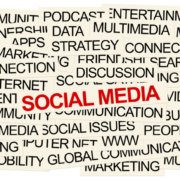6 Components of a Successful Senior Living Social Media Strategy
Using Social Media to Create a Fully Integrated Growth Strategy
For growth-oriented senior living communities and health-related organizations today, a sound social media strategy should be an integral part of the total marketing program. Your community events and outreach activities should now be viewed in the context of how they fit into your overall social media strategy. They represent an ideal opportunity for positive social interaction with the surrounding community. Social media becomes a vehicle that can take virtually anything positive that is happening and turn it into a valuable marketing opportunity. Social media, which is increasing in usage and popularity every day, becomes a way to supercharge and magnify your marketing efforts.
The overarching goal for senior living organizations today is to become the recognized “go-to” resource for all things related to senior care and senior lifestyles. This involves a strategic shift from an “advertising/event mindset” to becoming a valuable and valued educational resource for your community. Ultimately, your social media strategy is not just about getting your name in the marketplace, it is about getting prospects to visit your community and to choose your community as the best option over competing communities or remaining in the home.
Specific Goals that Support Your Senior Living Community’s Growth
Sage Age works with our client-partners to develop a comprehensive marketing strategy that includes social media as a vehicle to accomplish the following key goals:
- Building Credibility – Even if never spoken, families have two questions: Will mom or dad be safe here? Will mom or dad be happier here above all other options? When social media is effectively implemented, it will build credibility, trust, and confidence – the keys to the “purchase decision.”
- Storytelling – Storytelling is the oldest and most effective form of marketing that exists. It grabs the heart, builds credibility and is most powerful when it is a resident or their family member that is telling the story. Social media is the only effective way to tell fresh stories to a large audience.
- Crowd Sourcing – This is a business term for “viral marketing.” If you tell compelling stories and provide useful information, the crowd will tell your story for you. They will pass the stories on to their families and friends, to people you might never be able to reach directly through traditional marketing approaches.
- Content Marketing – For most communities, finding time to write, knowing what to write, and actually writing it effectively is often a significant challenge. Yet creating valuable content on a consistent basis is a powerful way for you to stay personally connected with your prospects, your family members, and your referral sources. Sage Age excels at creating relevant, compelling and engaging content that will garner your customer’s interest, attention, and response.
- E-mail — E-mail is the tool that supports and reinforces the above tasks. It is how you get the word out.
- Assessment – Finally, it is essential to continually assess the effectiveness of your efforts and to make minor adjustments or radical changes based on the findings.
Does your senior living community have a social media strategy? Let’s Chat!








